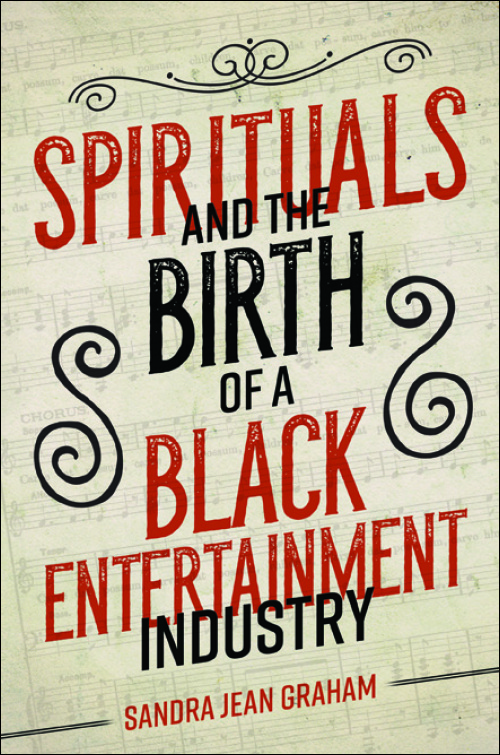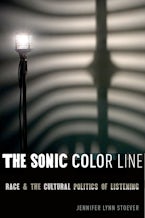In the famous words of Lemon Demon’s Redesign Your Logo, everything’s connected. Such is the truth for the reading I’ve been doing in my first week on the Summer ‘22 Musical Geography Project, drawing from books, a doctoral thesis, and articles. In this post, I’ll be talking about why the preliminary reading I’ve done before starting research on the project itself is necessary and helpful!
Contextual history is important to understand when becoming familiar with music from any time or place. In this case, understanding the movement of enslaved people during the slave trade and the way they made music before, during, and after that time period is critical. The preface of Eileen Southern’s The Music of Black Americans  explains that it is high time the musical activities of Black Americans is researched and written about. Black musicians created entirely new music, and this creation remained so important to those enslaved people who were shipped across the Atlantic that if they ran away, they might be identified by their skill at French Horn or the fiddle. This is just the beginning of research that starts to tell you just how impactful music has been for many African and African American cultures. The map I created below details a few of the newspaper clippings Southern mentions that are calling for the return of their runaway slaves. Most interesting is that they all detail that person’s musical skill in some manner, whether that be in whistling or in violin.
explains that it is high time the musical activities of Black Americans is researched and written about. Black musicians created entirely new music, and this creation remained so important to those enslaved people who were shipped across the Atlantic that if they ran away, they might be identified by their skill at French Horn or the fiddle. This is just the beginning of research that starts to tell you just how impactful music has been for many African and African American cultures. The map I created below details a few of the newspaper clippings Southern mentions that are calling for the return of their runaway slaves. Most interesting is that they all detail that person’s musical skill in some manner, whether that be in whistling or in violin.
The beginning of Southern’s book focuses on the time period between the 1600s and the 1800s, following the slave trade over to places in America like New York City and Charleston (known in those years as Charles Town). But then we start to move further forward in time to the early 1900’s with the opening of the Washington Conservatory, a black educational institute started by Oberlin College’s first black woman graduate: Harriet Gibbs Marshall. Sarah Schmalenberger discusses how the institution contributed to racial uplift throughout its short lifespan in her dissertation, The Washington Conservatory of Music and African-American Musical Experience, 1903–1941.  Marshall’s plan with creating this conservatory was to provide a space for black people to be educated about what was considered ‘high-class’ music (classical). The Washington Conservatory provided a place for Black students to become professional musicians. The lives of graduates of institutes like this are exactly what we’ll be diving into for this project. This classical music space was typically dominated by white people, so Marshall was making important steps for Black musicians to be recognized on the same level as white musicians. Scholars have long referred to music’s role in racial uplift – that is, when a person from a marginalized race works to make their race look more equal to white people.
Marshall’s plan with creating this conservatory was to provide a space for black people to be educated about what was considered ‘high-class’ music (classical). The Washington Conservatory provided a place for Black students to become professional musicians. The lives of graduates of institutes like this are exactly what we’ll be diving into for this project. This classical music space was typically dominated by white people, so Marshall was making important steps for Black musicians to be recognized on the same level as white musicians. Scholars have long referred to music’s role in racial uplift – that is, when a person from a marginalized race works to make their race look more equal to white people.
There are more examples of racial uplift that I noticed in my reading, specifically in the Jubilee Singers that Sandra Graham discusses in Spirituals and the Birth of a Black Entertainment Industry  and Kristen Meyers Turner’s article on Theodore Drury’s Grand Opera Company.
and Kristen Meyers Turner’s article on Theodore Drury’s Grand Opera Company. The Fisk Jubilee Singers were a group of Black college students who toured the country (and eventually the world) performing concert spirituals to raise money for their school. Graham examines how groups and individuals expanded the Black entertainment industry by appropriating spirituals (which were mostly created and sung by enslaved black people) for commercial use. Once they were written down, these spirituals became static, just one instance of an incredibly dynamic piece of music. The static spiritual became the ‘commercial spiritual’, and this is what the Fisk Jubilee Singers performed. In their success, they accomplished racial uplift. As Kristen Meyers Turner shows, Theodore Drury also took steps toward improving the public’s view of Black people in creating his all-Black Opera Company. Though his company’s make-up changed over the years with cast numbers ranging from 40 to 100 people, he kept an all-Black company for several years. However, a lack of funding forced him to bring in white actors. He kept his Black actors in the lead roles, though. Carmen was a popular Opera he put on multiple times, which has a love triangle as a central aspect. Some black actors in other companies were discouraged by the lack of love stories in their own performances alongside white people, likely caused by the director’s ideas that white audiences wouldn’t want to see Black love stories. In this way, Drury pushed back against what was expected of Opera Companies. For a while, he was successful. Many white newspapers commended their performances, but undercut the compliments with jabs at the Black company. The New York Herald wrote after one evening’s production of Carmen, “a remarkable performance, all things considered …” However, once he got too successful (enough for major newspapers to report on them), articles were much harsher. He moved his production up to New York City, and was never able to recreate his former success.
The Fisk Jubilee Singers were a group of Black college students who toured the country (and eventually the world) performing concert spirituals to raise money for their school. Graham examines how groups and individuals expanded the Black entertainment industry by appropriating spirituals (which were mostly created and sung by enslaved black people) for commercial use. Once they were written down, these spirituals became static, just one instance of an incredibly dynamic piece of music. The static spiritual became the ‘commercial spiritual’, and this is what the Fisk Jubilee Singers performed. In their success, they accomplished racial uplift. As Kristen Meyers Turner shows, Theodore Drury also took steps toward improving the public’s view of Black people in creating his all-Black Opera Company. Though his company’s make-up changed over the years with cast numbers ranging from 40 to 100 people, he kept an all-Black company for several years. However, a lack of funding forced him to bring in white actors. He kept his Black actors in the lead roles, though. Carmen was a popular Opera he put on multiple times, which has a love triangle as a central aspect. Some black actors in other companies were discouraged by the lack of love stories in their own performances alongside white people, likely caused by the director’s ideas that white audiences wouldn’t want to see Black love stories. In this way, Drury pushed back against what was expected of Opera Companies. For a while, he was successful. Many white newspapers commended their performances, but undercut the compliments with jabs at the Black company. The New York Herald wrote after one evening’s production of Carmen, “a remarkable performance, all things considered …” However, once he got too successful (enough for major newspapers to report on them), articles were much harsher. He moved his production up to New York City, and was never able to recreate his former success.
The last reading I did was Jennifer Stoever’s The Sonic Color Line.  The “Color Line” (no sonic) is the idea that there is an inherent difference between white people and Black people, that we can draw a line between the two ‘races’. This is at the same time true and false. It is obviously not true because no such line has ever been clearly defined – but because people have believed in it, the color line has often become true in certain respects. It’s the idea that we’re thinking things into existence. The Sonic Color Line is an extension of the original color line concept narrowed down to sounds. White Americans have assigned sounds to Black speakers and singers, which in turn affects them and their lives in extremely impactful ways. For example, Black voice actors often don’t get hired because they don’t ‘sound Black enough’. White Americans have imagined a sonic color line that presumes a clear difference between the ways Black and white Americans speak.
The “Color Line” (no sonic) is the idea that there is an inherent difference between white people and Black people, that we can draw a line between the two ‘races’. This is at the same time true and false. It is obviously not true because no such line has ever been clearly defined – but because people have believed in it, the color line has often become true in certain respects. It’s the idea that we’re thinking things into existence. The Sonic Color Line is an extension of the original color line concept narrowed down to sounds. White Americans have assigned sounds to Black speakers and singers, which in turn affects them and their lives in extremely impactful ways. For example, Black voice actors often don’t get hired because they don’t ‘sound Black enough’. White Americans have imagined a sonic color line that presumes a clear difference between the ways Black and white Americans speak.
All these readings have set me up well for the work we’ll be doing throughout the rest of the semester. In researching the history of music’s migration and transformation from 1600s Africa to 1900’s America, I now have a good base for continuing that work in a more specific fashion: music making after college by Black Americans.